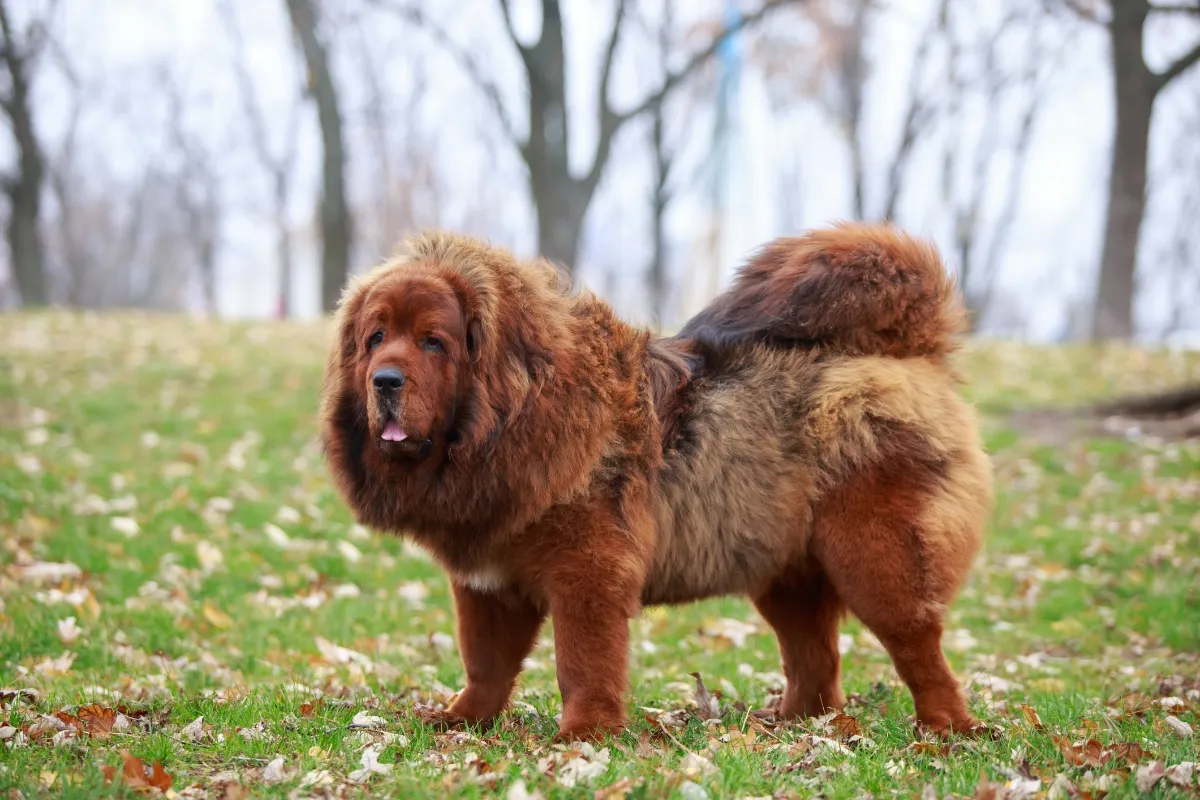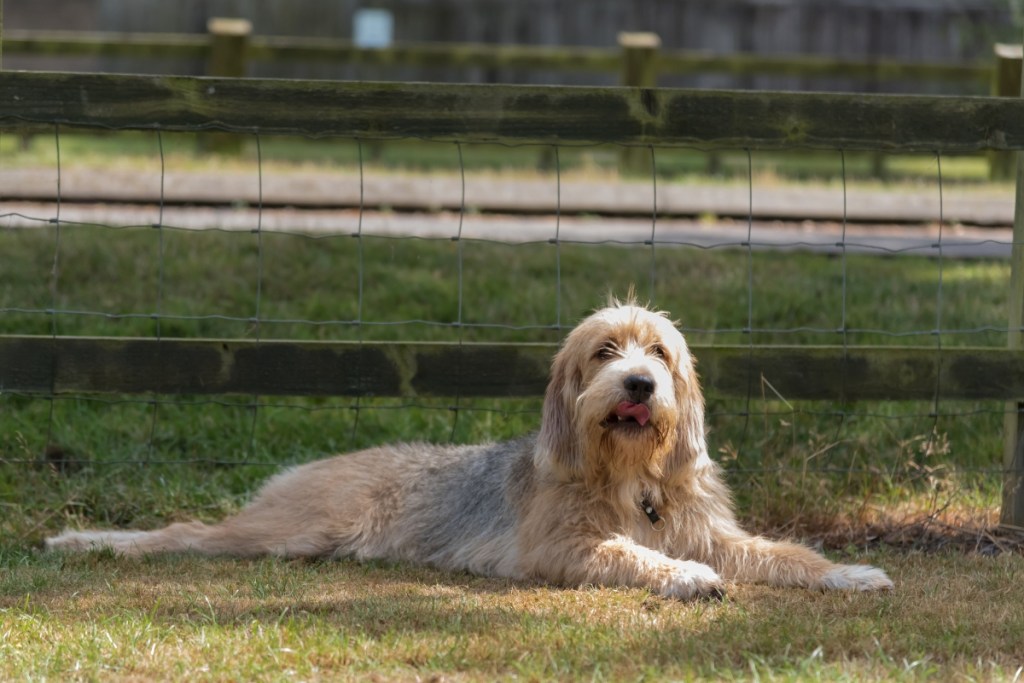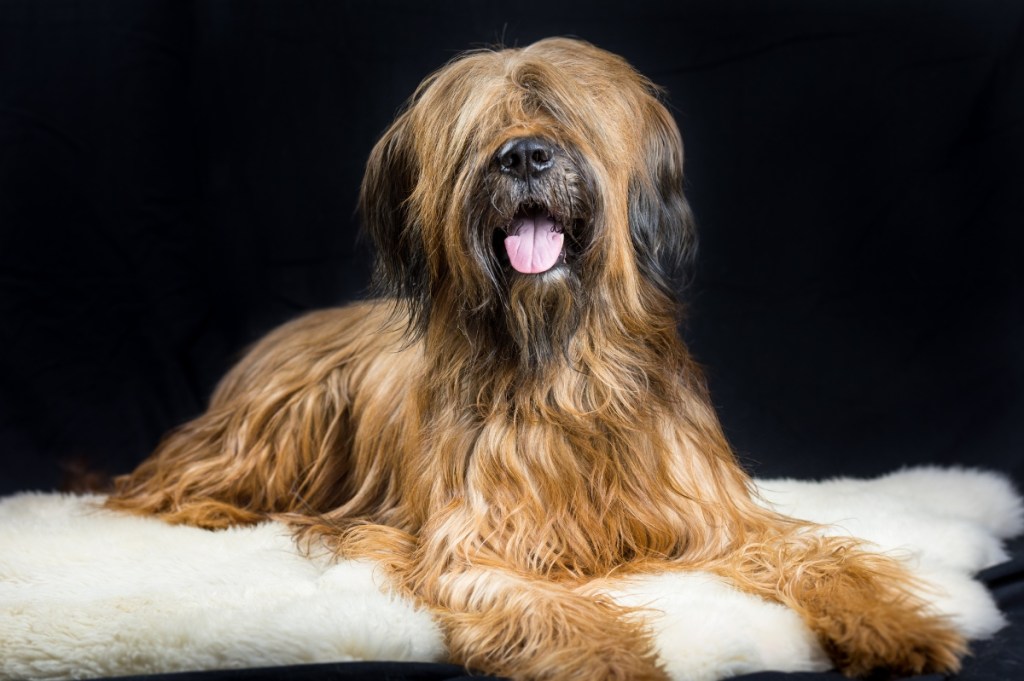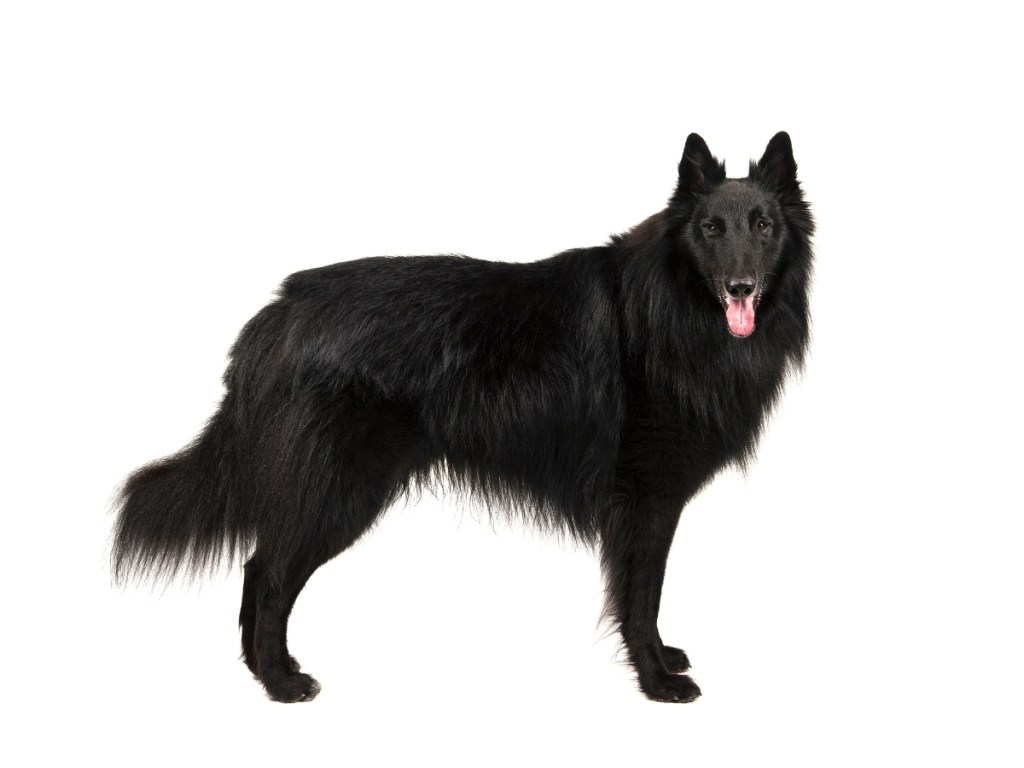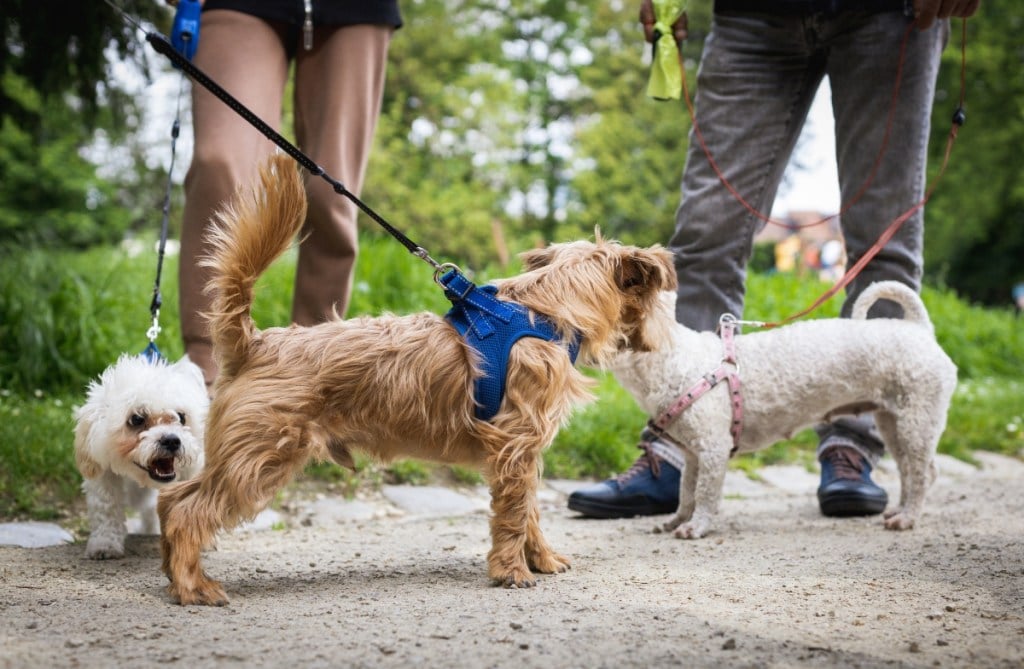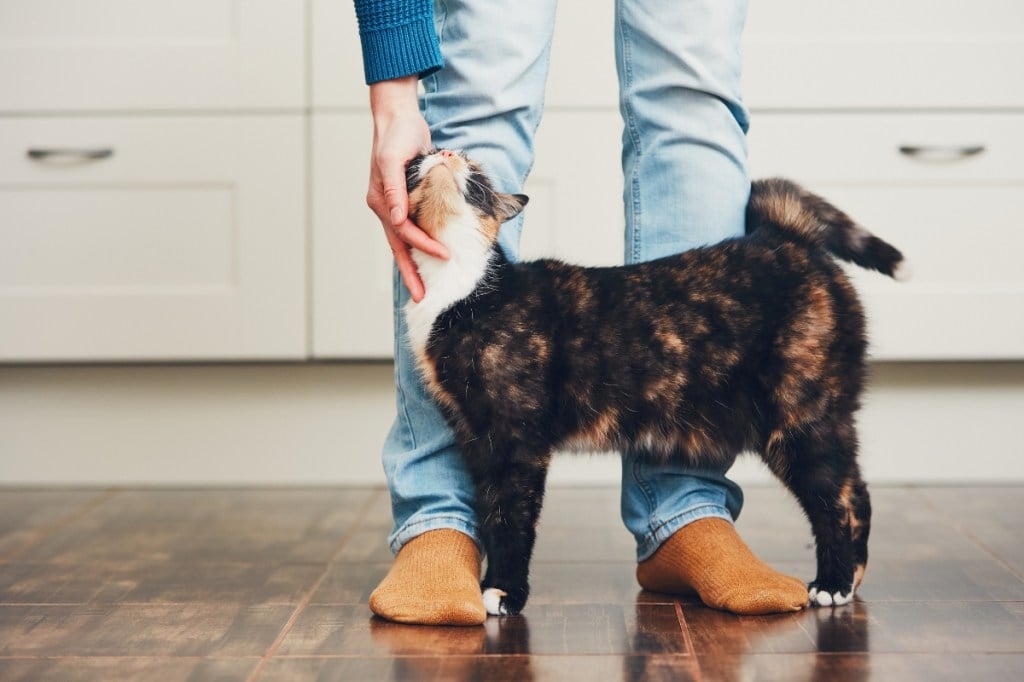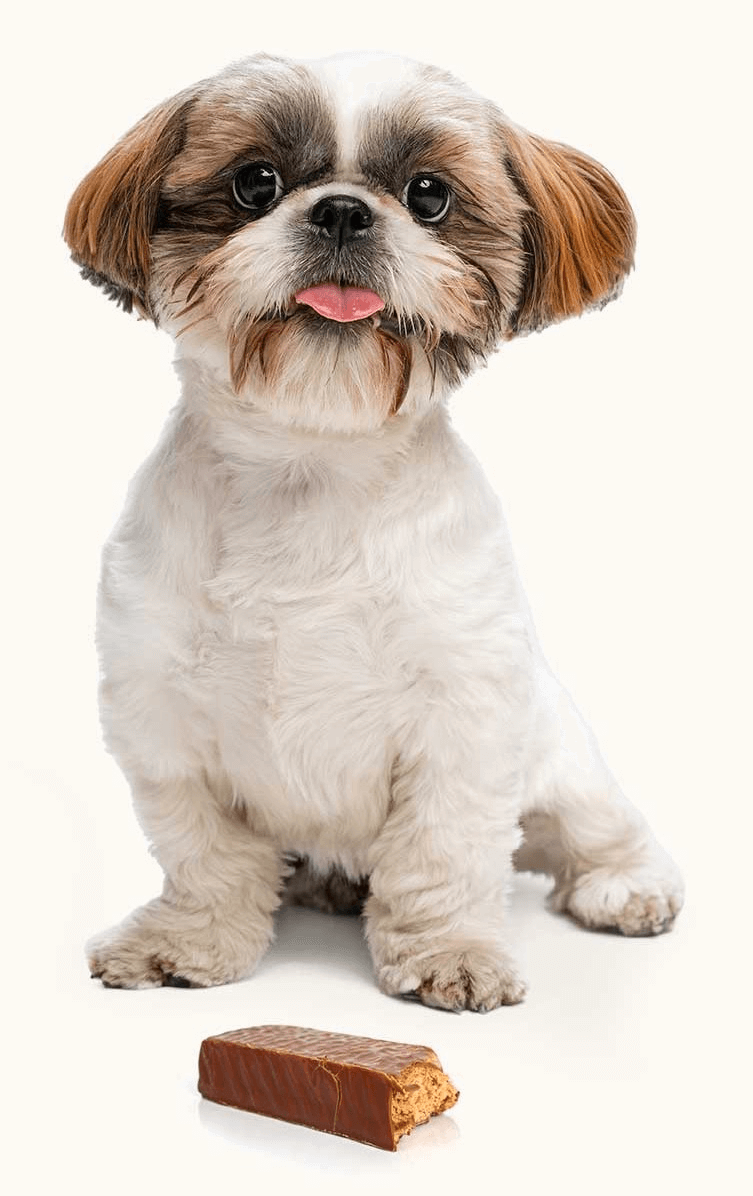The Tibetan mastiff dog breed is majestic and powerful, with ancient roots and a larger-than-life presence. Known for their independence, intelligence, loyalty and watchfulness, these dogs were originally bred to protect livestock in the Himalayas — and they haven’t forgotten their heritage. These dogs are bold, territorial and loving with their families, but they’re not your average beginner-friendly pup.
At Healthy Paws, we admire all breeds and believe every dog deserves to live in a loving home that understands their unique needs. Below, we walk you through the essentials of the Tibetan mastiff dog breed, from its origins and temperament to its health needs, care tips and pet insurance considerations.
Size of Tibetan Mastiff
Tibetan mastiffs are massive, slow-maturing dogs with a bear-like build. Males typically weigh between 90 and 150 pounds and stand 26 to 29 inches tall. Females are slightly smaller, weighing in around 70 to 120 pounds and measuring 24 to 27 inches at the shoulder. They grow quickly at first but can take 2 years or longer to reach their full-size adult frame.
They fill out gradually, building muscle and bone density well into adulthood. Their large bones and thick coats add to their already impressive silhouette, making them one of the most imposing breeds around.
Below is an overview of what Tibetan mastiff growth can look like:
| Age | Male Weight Range | Female Weight Range |
| 3 months | 30 – 45 lbs | 25 – 40 lbs |
| 6 months | 55 – 85 lbs | 40 – 60 lbs |
| 9 months | 70 – 110 lbs | 55 – 85 lbs |
| 12 months | 80 – 130 lbs | 65 – 100 lbs |

Characteristics of Tibetan Mastiffs
Tibetan mastiffs were bred to guard flocks, homes and monasteries in some of the most rugged environments on earth — and their personalities still reflect that legacy. They’re loyal and protective, often forming a deep bond with their families while remaining reserved or aloof with strangers. These dogs don’t thrive on constant affection, but they’re deeply connected to their people in a quiet, steadfast way.
While they can be affectionate, they’re not typically clingy. They can be good with children they know, but their large size and protective streak mean they do best with older kids who understand how to interact calmly and respectfully. Many Tibetan mastiffs also prefer being the only dog in the home or having space to themselves, especially if another dog challenges their boundaries.
Here’s a snapshot of what to expect from a Tibetan mastiff’s temperament and traits:
| Breed Characteristic | Level (High, Medium, Low) |
| Affectionate with People | Medium |
| Good with Kids | Low to Medium |
| Good with Pets | Low to Medium |
| Need for Exercise | Medium |
| Energy Level | Medium |
| Intelligence Level | High |
| Able to be Trained | Medium |
| Amount of Barking | High |
| Amount of Shedding | Medium |
History of Tibetan Mastiffs
Tibetan mastiffs’ origins trace back thousands of years to the nomadic cultures of Central Asia. Life at high altitudes shaped the breed into a tough, self-reliant guardian with the endurance to patrol vast terrain and the instincts to protect against huge predators such as wolves and leopards.
Their main job was to work independently, assess threats on their own and serve as a line of defense for people, herds and sacred grounds. That independent spirit is still strong today, which is why they tend to bond closely with their families but remain cautious around strangers.
Western interest in the breed began in the 1800s when a Tibetan mastiff was gifted to Queen Victoria. The dogs caused quite a stir, thanks to their lion-like manes and imposing presence. However, it wasn’t until much later that the breed became more widely known and accessible. The American Kennel Club officially recognized the Tibetan mastiff in 2006. Though they’re still considered rare in the U.S., their reputation as loyal, imposing and uniquely independent guardians continues to grow.
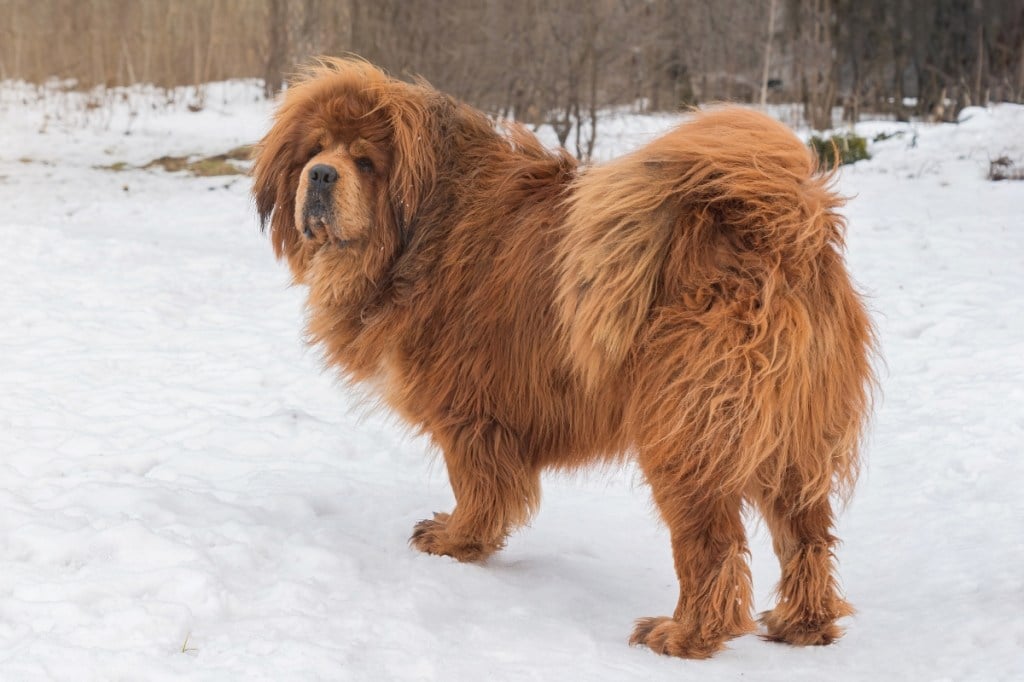
Tibetan Mastiffs Standard Information
The breed standard of the Tibetan mastiff describes the ideal characteristics of the dog in terms of physical structure, temperament and movement. Tibetan mastiffs are powerful, noble and heavily boned without appearing clumsy. Their presence is commanding, their movement purposeful and their expression both alert and solemn.
Here is an overview of the breed standard information for Tibetan mastiffs:
Head:
- Broad, strong head with a heavy, square-shaped skull
- Wrinkle appears on the forehead when alert
- Eyes are medium-sized, deep-set and expressive
- Ears are medium in size, V-shaped and drop forward
- Muzzle is wide with a well-developed stop
- Nose is broad and fully pigmented
- Lips are slightly pendulous but not exaggerated
- Teeth meet in a scissors or level bite
Neck, Topline, Body:
- Neck is strong and arched, with a noticeable mane or ruff in mature males
- Topline is level from withers to croup
- Body is well-muscled with a deep chest and strong, well-sprung ribs
- Tail is feathered, curled over the back and set high
Forequarters:
- Shoulders are muscular and moderately laid back
- Forelegs are straight and well-boned
- Elbows fit close to the body
- Feet are large, strong and compact with thick pads
- Toes are arched and well-knit
Hindquarters:
- Rear is broad and muscular with moderate angulation
- Thighs are powerful with strong second thighs
- Hocks are well let down and parallel
- Rear dewclaws may be present but are not required
- Feet are similar to the front — strong, compact and cat-like
Coat:
- Double coat with a dense, woolly undercoat
- Outer coat is coarse, straight and stands off from the body
- Hair is longer on the neck and shoulders, forming a mane in males
- Females have a less pronounced mane
- No trimming or sculpting of the coat is permitted
Color:
- Black
- Brown
- Blue-gray
- Gold
- All colors may have tan markings or be solid
- White star on the chest and minimal white on feet are acceptable
Gait:
- Movement is powerful, balanced and effortless
- Covers ground with drive and reach without wasted motion
- Tail may rise slightly when in motion
- Maintains composure and dignity in movement, even at a trot
Caring for Tibetan Mastiffs
A Tibetan mastiff is happiest when guarding what they love. These dogs aren’t glued to your side like some breeds, but they’ll keep a watchful eye on everything that matters.
Here are some general tips for taking the best care of a Tibetan mastiff:
Best Living Environments:
- Not well-suited to apartment living
- Best in homes with large, securely fenced yards
- Prefer quiet households without lots of visitors
- Do well with older children who understand boundaries
Type of Exercise:
- Moderate daily exercise to prevent boredom
- Long walks in calm areas
- Exploring a fenced yard with supervision
- Leashed hikes in cool weather to engage their senses
Mental Enrichment:
- Interactive toys or treat puzzles to challenge their minds
- Limited solo time — these dogs don’t do well when ignored
- Scent-based games like “find it” in the yard or house
- Calm obedience work or routine household roles to give them purpose
Training Strategies:
- Consistent, fair training using calm authority
- Positive reinforcement with clear, firm boundaries
- Early and ongoing socialization is essential
- Not food-motivated — praise and routine work better
- Requires a confident, experienced handler who respects the dog’s independence
- Not ideal for first-time dog owners
- Weekly brushing most of the year
- Daily brushing during seasonal shedding (spring and fall)
- Bathe only a few times a year — too often can strip natural oils
- Trim nails monthly, especially the dewclaws
- Brush teeth regularly and check ears for buildup
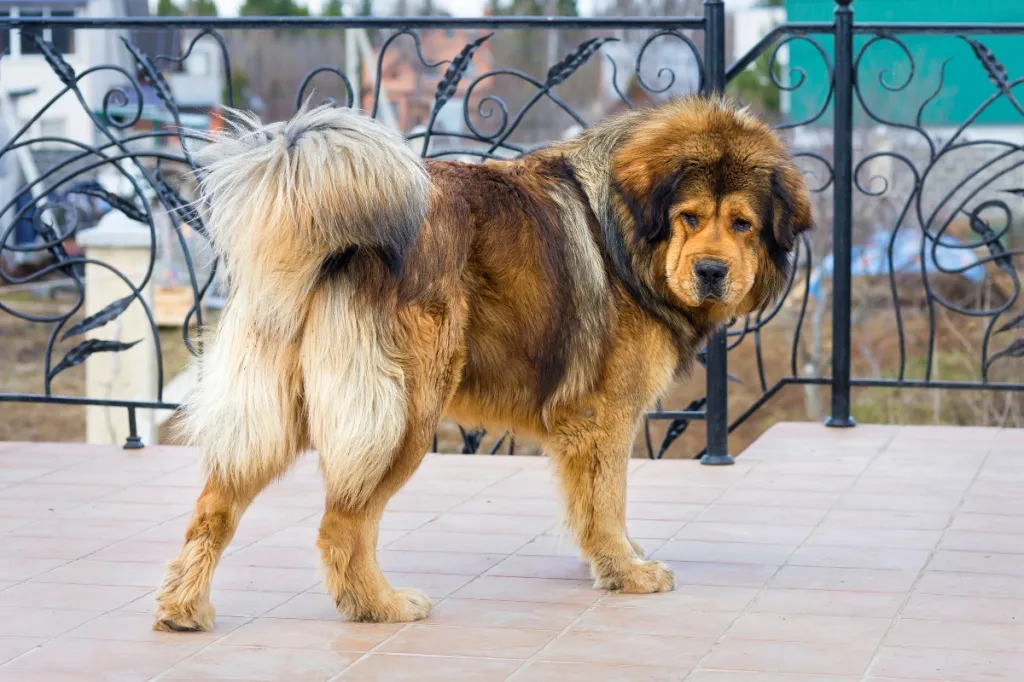
Common Health Problems of Tibetan Mastiffs
Tibetan mastiffs typically live 10 to 12 years and are generally sturdy dogs, but they can be prone to certain health conditions. Common issues include hip and elbow dysplasia, hypothyroidism, cataracts and entropion, an eyelid disorder that may require surgery.
Some lines may carry a rare nerve disorder called canine inherited demyelinative neuropathy (CIDN), which affects coordination in puppies. This is a rare, potentially fatal condition. Like many large, deep-chested breeds, they’re also at risk for bloat. Working with a responsible breeder, feeding a large-breed diet and keeping up with regular vet care can help reduce health risks and keep your Tibetan mastiff thriving.
Diet and Nutrition for Tibetan Mastiffs
Most adult Tibetan mastiffs do well on a high-quality, nutritionally balanced dog food formulated for large breeds. Puppies should stay on large-breed puppy food until they’re around 18 months old, which supports healthy bone development during their extended growth period. If you’re cooking meals at home, always work with a veterinary nutritionist to get the right balance for your dog’s age, weight and activity level.
To keep your Tibetan mastiff in good shape, you should be able to feel their ribs easily but not see them. Overfeeding or free-feeding can lead to unhealthy weight gain, especially for a slower-maturing breed like this one. Instead of leaving food out all day, serve two to three measured meals for adults and three to four for puppies.
Like other deep-chested breeds, Tibetan mastiffs are at increased risk of bloat, so it’s safer to divide meals throughout the day and avoid feeding right before vigorous exercise.
Always talk to your vet for guidance on specific dog food brands, feeding amounts and supplements based on your dog’s age and health profile.
Where to Adopt or Purchase Tibetan Mastiffs
If you’re looking to bring a Tibetan mastiff into your home, you can start with the American Tibetan Mastiff Association (ATMA), which offers resources and breeder referrals. They promote ethical breeding and education about the breed’s specific needs.
Rescue groups like Tibetan Mastiff Rescue, Inc. also work to find loving homes for adoptable dogs. You can check sites like Adopt a Pet or Petfinder to see available Tibetan mastiffs in shelters and rescues near you.
These dogs aren’t especially common in the U.S., so whether you adopt or go through a breeder, expect to be patient in your search, and ask plenty of questions to make sure you’re the right match.
Related Breeds
Tibetan mastiffs are one of a kind, but if you’re drawn to their size, presence and independence, you might also be interested in these breeds:
- Anatolian shepherd
- Great Pyrenees
- Leonberger
- Kuvasz
- Caucasian shepherd
- Newfoundland
Each of these breeds brings a slightly different combination of working instinct, protectiveness and personality, but like the Tibetan mastiff, they all thrive in homes that appreciate a strong, thoughtful companion.
Pet Insurance for Tibetan Mastiffs
We recommend signing up your Tibetan mastiff for pet insurance early, ideally while they’re still a puppy. Healthy Paws offers coverage designed to support large breeds with particular health considerations, including hereditary conditions.
With our top-rated plan, you can visit any licensed vet in the U.S. and get reimbursed for covered treatments, from injuries and illnesses to chronic conditions and advanced diagnostics. Submitting a claim is easy through our website or mobile app and most claims are processed within two business days.
Visit our quote page to explore coverage options and take a meaningful step toward peace of mind for your Tibetan mastiff.
